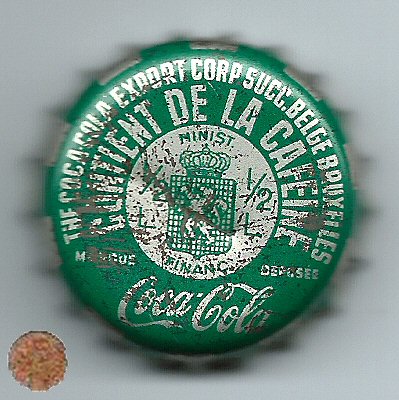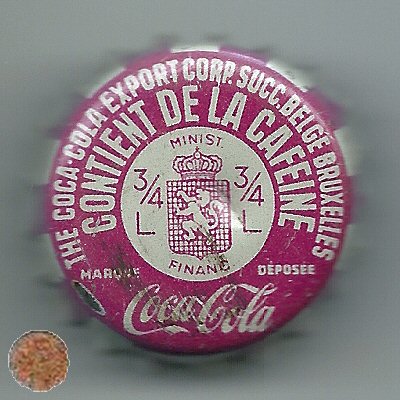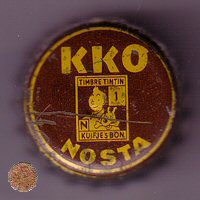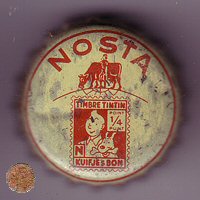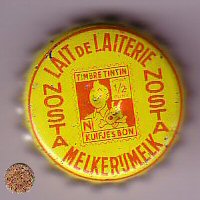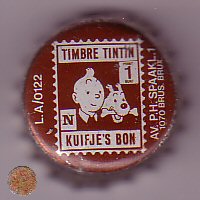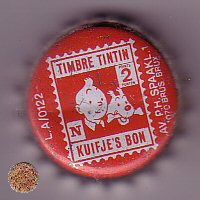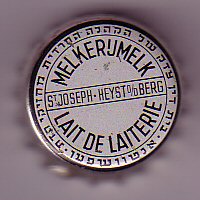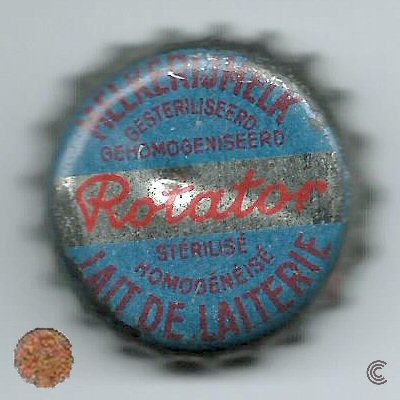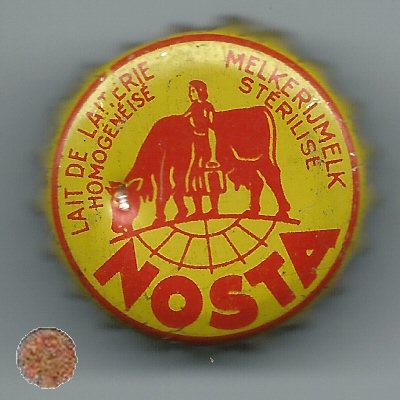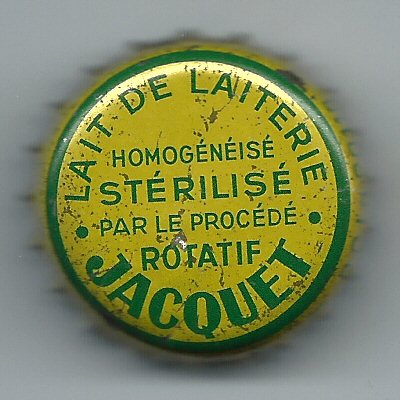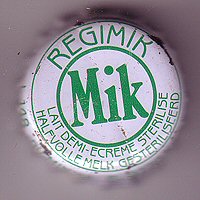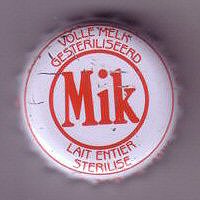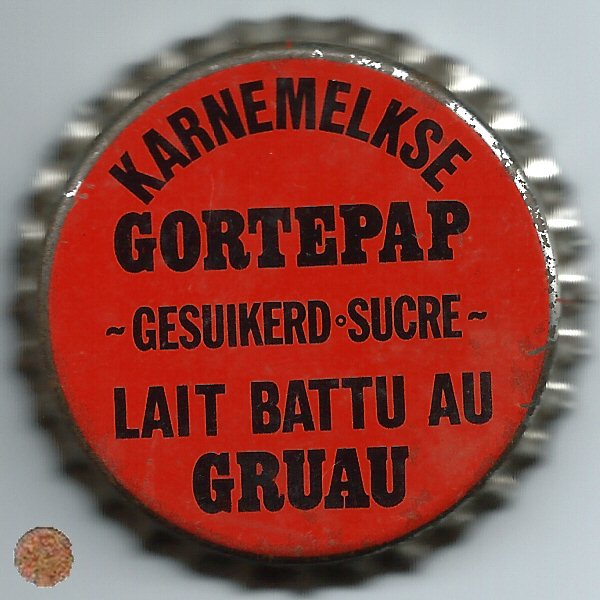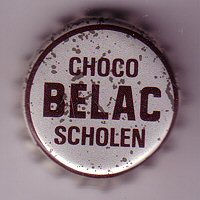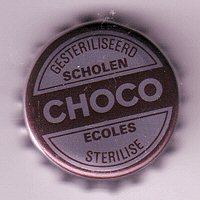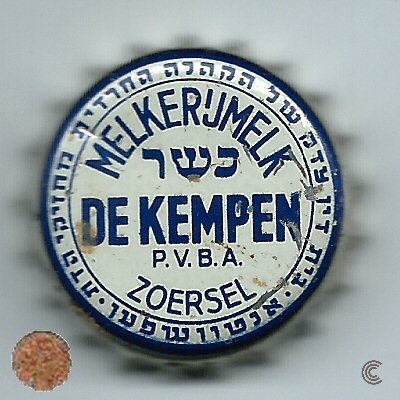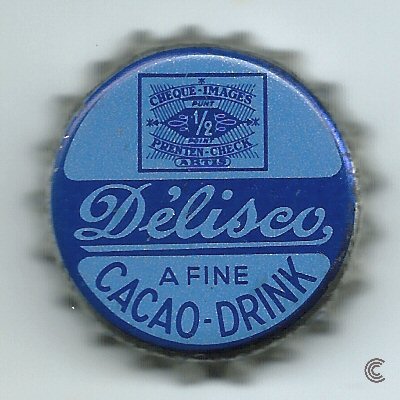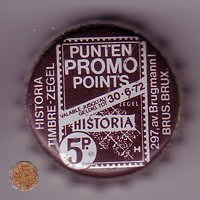Understanding the inscriptions or the names of the caps
Fiscal indications (beer caps)
There had been an agreement between brewers since 1949 and which was transcribed in 1972 in a qualification of beers. It was not based on the degree of alcohol or the quantity of ingredients but on the density. The lighter the beer, the lower the production costs and therefore the quality and the price of beer.
The beers were thus classified into 7 categories:
- Bière de Luxe
- Supérieur (pils)
- Catégorie I (export)
- Catégorie II (bock)
- Catégorie III A (ménage)
- Catégorie III B (ménage)
- Catégorie III C (ménage)
In 1974, a new law reduced the number of categories from 7 to 4, categories which were still based on the density of the beer but now expressed in Plato degree :
- Catégorie S : 15° plato
- Catégorie I : 11° - 13,5° plato
- Catégorie II : 7° - 9° plato
- Catégorie III : 1° - 4° plato
The seal of the Ministry of Finance (water caps and fruit juice)
A cap with the seal of the Ministry of Finance had to be placed on each bottle of water, lemonade or fruit juice. It was only available against payment of excise duties. A color was foreseen for each capacity: Blue (25 cl), Green (50 cl) or Mauve (75 cl).
This system disappeared in 1975 with the introduction of VAT.
The names of the beers
Some beer names refer to one of the ingredients of beer
- Gersten, Gerst-Hop : Gerst is barley in Dutch
- Houblo Supra : houblon is hops in French
- Maltinette, Maltop, Maltosa : malt
- Orgéor : l'orge is barley in French
Tintin points
From December 1950, Tintin points appeared in Tintin's journal and on certain food products. They made it possible to acquire
a Tintin pennant, albums from the Voir et Savoir collection, Tintin puzzles and collections that have nothing to do with Tintin such as collections of
geography or history of Abbot Schoonjans and the Funcken spouses.
On each Tintin point, one or two letters made it possible to identify which product it came from: for Nosta, it was an 'N', an 'M' for Materne jams,
etc ...
The different types of milk
The first difference between the different kinds of milk is the sterilization stage which will allow a greater or lesser storage period thereafter.
We thus distinguish:
- Raw milk Completely natural milk, coming out of the cow's udder at 38°C, does not undergo any treatment, just cooled in a milk tank to 3 or 4°C. To be consumed within 48 hours. In essence, there is no raw milk capsule.
- Pasteurized fresh milk Milk undergoes heat treatment as it is pasteurized at 72°C for 15-20 seconds and cooled rapidly to around 4°C. To be consumed within 7 days. Available at the farm or in store in the fresh department. Some milks were then double steamed after pastorization via a rotary sterilizer.
- Sterilized milk UHT (UHT = Ultra Haute Température) It undergoes a heat shock treatment since it is sterilized at around 150°C for 4 seconds. Industrial process used since 1962 in the dairy industry which allows a longer shelf life of 90 days minimum in unopened packaging. It is found everywhere and is the most consumed. Available in “entier", “demi-écrémé” and “écrémé” versions.
- Lait entier : milk with a fat content of at least 3.50% (m/m); it is the highest in fat after raw milk (4g/100ml).
This milk must now be marketed in Europe in red cap bottles or packaging marked with red, so as to distinguish it from semi-skimmed (green) and skimmed (blue). - Lait demi écrémé : less rich in fat (1.2g/100ml) since part of its cream has been removed. The cap was green but should now be blue. Skimming involves centrifuging the milk to separate the fat from the milk, which makes up the cream, and from the low-fat milk, which contains almost no fat. The cream of milk is then used for the production of butter or ready-to-use cream.
- Lait écrémé : product from which all of the fat (0g/100ml) has been removed. It nevertheless retains its proteins and carbohydrates (lactose). The capsule was blue but should now be green.
- Standardized milk : the rate of fat naturally present in milk is variable. It depends on several factors such as the breed of cattle, the cow's diet and the seasons. As for drinking milk, it often has a fat content that has been voluntarily adjusted to a certain percentage; this is then referred to as standardized milk. The adjustment is made by mixing whole milk and skimmed milk until the desired fat content is obtained.
- Homogenized milk : the fat globules in milk naturally tend to rise to the surface to form a creamy layer, floating on the leaner phase of the milk. This property of the fat poses a problem in the case of drinking milk because the fat would float in the consumer's glass or would remain partly stuck to the wall of the milk carton. The homogenization process involves breaking the fat globules into fine particles. These do not rise to the surface, but are distributed homogeneously in the aqueous phase of the milk, which prevents the separation of the cream even after storage for several days.
- Babeurre, or, buttermilk is a white liquid, with a sour taste, traditionally obtained from fresh or fermented cream or from fermented
milk and after making butter by churning.
Barley porridge milk (gortepap in Dutch) was also offered for sale by many dairies.
All milks sold before 1962 as sterilized were by pastorization
Other dairy curiosities
In the 60s and 70s, milk was distributed free of charge in schools, the cap was then different: here two caps marked "scholen" or "écoles" (schools).
Two caps of kosher milk with the mention in Hebrew.
Dairies also offered Historia or Artis points, which made it possible to buy books to be completed published by Belgian publishing houses of the same name; in 1976, Artis and Historia merged.








